Project Log: Thursday, February 3, 2011
With half a day at my disposal, I pressed onwards with
the preliminary aspects of the tank installations.
Yesterday's tabbing had cured overnight, so I did the
usual quick sanding to relieve rough edges and prepare
the surfaces for future work; this wrapped up the key
structural work required for the engine room tankage
spaces. While there'd be additional construction
to enclose the tanks, I planned on this rigged "base" to
be the main means of restraint for the tanks. |
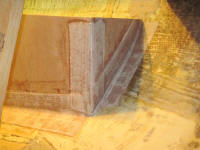
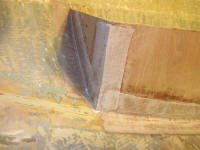 |
I reinstalled the forward (fuel) tank on each side,
holding them in place with some foam scraps. Then,
I fitted the after (water) tank in the space remaining
on each side, following the same general layout process
I'd used earlier on the fuel tanks to locate and drill
holes for the water tank drains.
For various reasons, even though the two tanks on each
side were designed as continuations of one another
(essentially designed as one large tank that was cut in
half) and therefore should have lined up perfectly, the
water tanks, when placed in position, ended up about
1/2" - 1" higher than the fuel tanks just ahead.
Though this bothered me on some level--I'd have
preferred it if the tanks were level with one another as
designed--it didn't bother me enough to consider
adjusting the forward tanks' positions to raise them
even with the aft tanks: this seemed entirely
unnecessary to satisfy vanity in a space that wouldn't
even be seen later, and would have meant a lot of
additional work, since it would mean the forward tank no
longer rested on the hull, but would require some sort
of support system. And there was no practical
reason whatsoever why this slight misalignment made any
difference to the tanks' function or security.
Otherwise, the tanks fit the space as designed, and
tightly against the bulkheads on three sides. I'd
fill the voids between the hull and the angled tanks
sides with expanding foam a bit later, once I'd
finalized all the other installation details. |
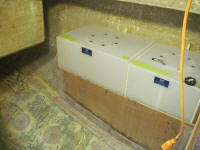
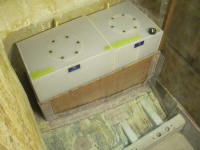
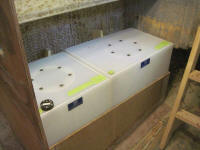
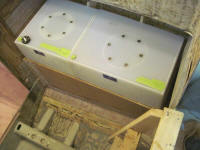 |
I was awaiting the pipe nipples and shutoff valves for
the tanks, which were due anytime, and until those were
installed in the drain fittings, I'd not proceed further
with the tank installation-though for all intents and
purposes the main installation work was complete, at
least in terms of the significant structure required to
retain the tanks securely.
Next on the agenda was the aft fuel tank. I
brought the new plywood platform up to the boat and
test-fit it in its designated space beneath the cockpit.
Once I'd aligned it properly, I made some reference
marks on the hull showing the edges of the platform and
also a rough indication of where I needed to apply paint
before its installation. |
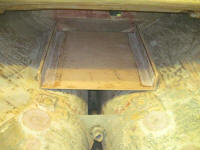 |
With the platform removed to the bench, I coated the
bottom side and edges with epoxy resin, as this portion
of the platform would be inaccessible once it was
installed. |
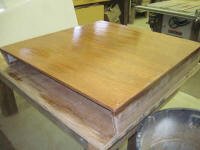 |
Inside the boat, I applied a coat of gray Bilgekote
paint to the area that would soon be hidden by the new
tank platform, including the depths of the bilge
beneath. |
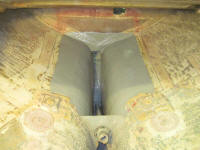
|
Total Time Today: 4.25 hours
|
<
Previous | Next > |
|
|










